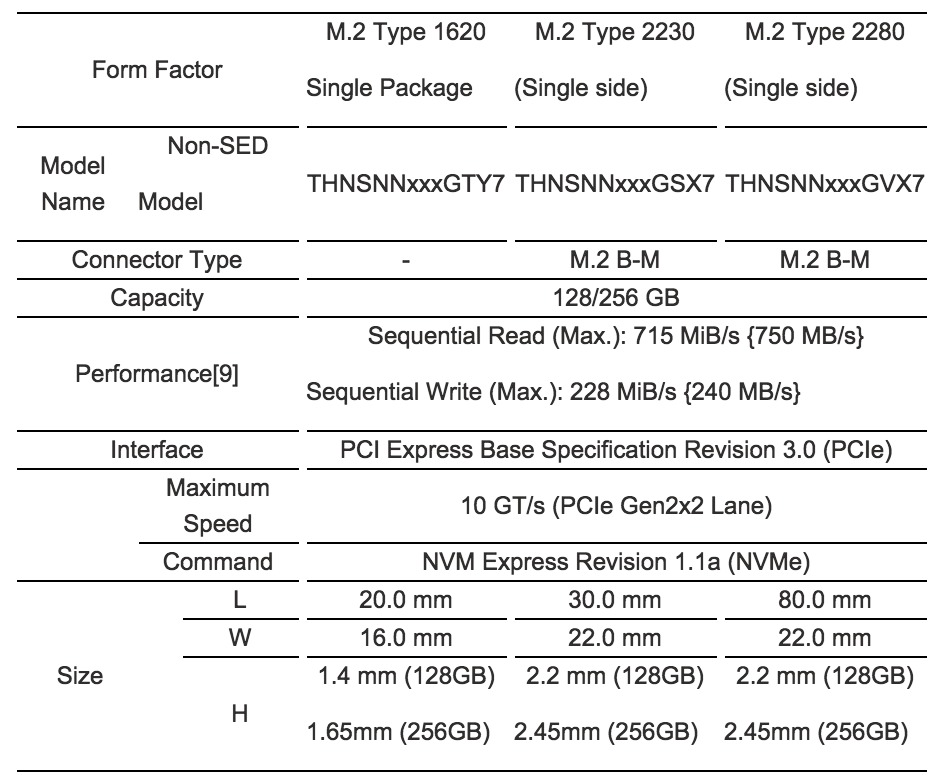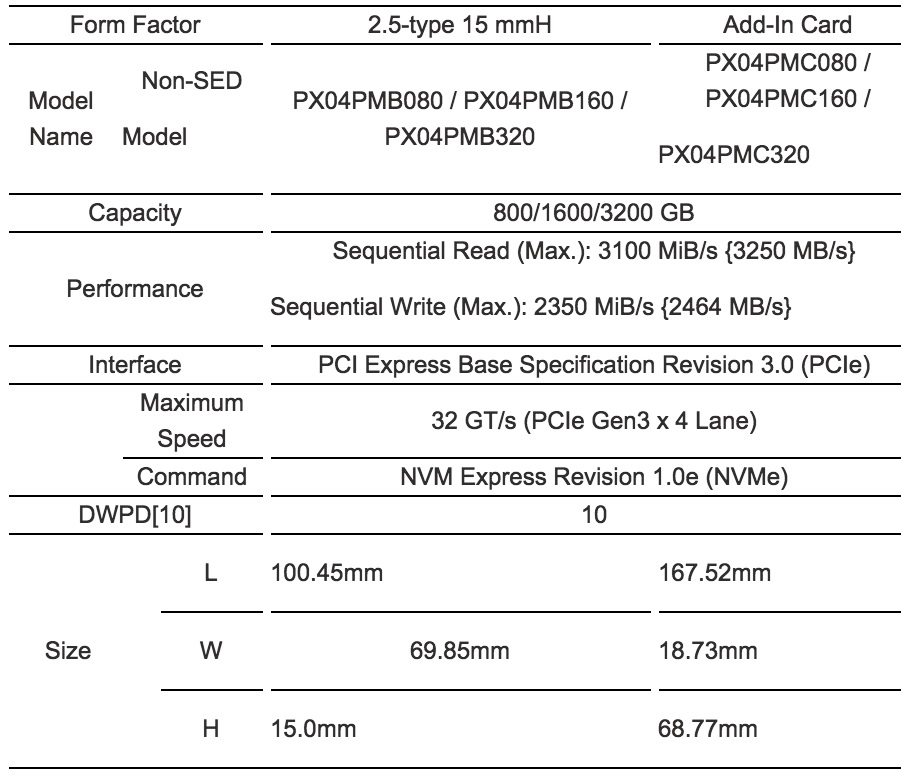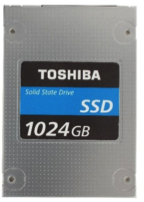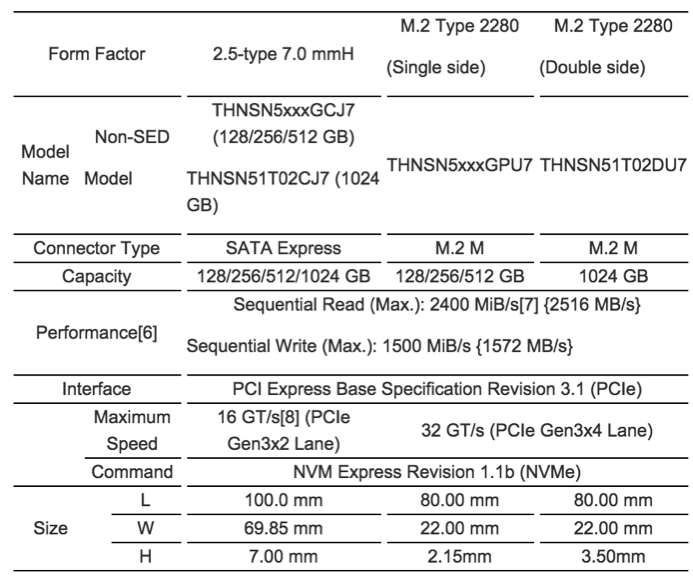Three Toshiba NVMe PCIe MLC SSD Families, for Notebooks, Tablets, PCs and Servers
1,024GB in M.2 type 2280 form factor
This is a Press Release edited by StorageNewsletter.com on August 17, 2015 at 2:55 pmToshiba Electronics Europe announces three new families of SSDs fitted with high-speed PCIe interfaces that provide high-bandwidth point-to-point links with the processor and reduce system bottlenecks.
The drives use the NVMe protocol and have been designed for various applications including high performance notebooks, thin notebooks, 2-in-1/convertible notebooks, all-in-one PCs and tablets; and server and storage applications.
Each SSD family has been engineered to provide performance and reliability for its target application with capacity, form-factor and security capabilities to match.
All three SSD families make use of Toshiba-developed controller platforms and Toshiba’s own MLC NAND flash memory.
High performance notebooks and PCs
The XG3 family of SSDs is housed in M.2 Type 2280 form factor and is the industry’s highest capacity [1] (1,024GB) client NVMe SSD designed for high performance notebooks, 2-in-1 laptop and all-in-one PCs. The drives support up to four lanes of PCIe 3.1, which has a maximum interface bandwidth more than six times that of 6Gb SATA. The XG3 is also the industry’s first [1] NVMe SSD available in a 2.5-inch SATA express form factor. The XG3 SSD family is equipped with Toshiba’s QSBC (Quadruple Swing-By Code) error-correction technology, an efficient ECC, which helps protect customer data from corruption, improves reliability, and extends the life of Toshiba SSDs. Engineered for power efficiency, the XG3 series also features lower power state modes and is the first Toshiba product, along with the BG1 SSD family, to support the Trusted Computing Group security specification, Pyrite.
Thin notebooks and tablets
The BG1 SSD family is the world’s smallest [1] NVMe SSD, available in a single package measuring just 16x20mm (M.2 Type 1620) or a removable M.2 Type 2230 module with up to 256GB in capacity. Designed for thin notebooks, 2-in-1/convertible notebooks and tablets, the BG1 family enables PC OEMs to produce thin mobile PCs and tablets while offering a better performing alternative over SATA SSDs for mobile PCs. The BG1 SSD family supports TCG Pyrite and features lower power state modes.
BG1 Series

Server and storage appliances
The PX04P series of enterprise SSDs are designed for servers and storage appliances needing scalable power and performance settings. The PX04P series NVMe SSD has the industry’s lowest power consumption[1], with 18W needed to power the drive at maximum performance. PX04P’s combined performance and low power consumption may contribute to low TCO demanded by today’s enterprise data centers. The PX04P family also supports up to four lanes of PCIe 3.0, and is available in either a HHHL (half-height half-length) add-in card or a 2.5-inch form factor with SFF-8639 connector. The eSSD family is also equipped with Toshiba’s QSBC error-correction technology.
PX04P Series

“Toshiba leverages the performance and latency advantages of PCIe and flash memory to produce industry standard NVMe SSDs that will reach client, hyperscale/datacenter and enterprise markets. Market adoption of NVMe SSDs is going to accelerate, and Toshiba is well positioned to capitalize on this trend,” said Don Jeanette, VP, Trendfocus.
“With analysts predicting greater NVMe SSD adoption in the next year, at Toshiba, we are ensuring our customers have plenty of choices and that their needs are met by offering a broad portfolio of high performance NVMe SSD solutions, in multiple performance levels and form factors,” said Martin Larsson, VP, Toshiba Electronics Europe, storage products division.
Samples of Toshiba’s newest lines of NVMe PCIe SSDs will be available in Q4 2015.
Newest NVMe PCIe SSDs as well as the PX04S series of enterprise 12Gb SAS SSDs were on display at the Flash Memory Summit in San Jose, CA.
[1] As of 11th August 2015, this claim was accurate according to Toshiba research.














 Subscribe to our free daily newsletter
Subscribe to our free daily newsletter
